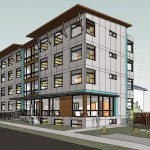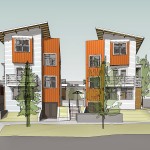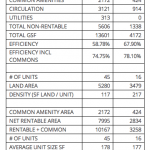Microhousing: The Mayor is Listening
Yesterday Seattle Mayor Ed Murray responded to the idea that the City Council’s efforts to regulate microhousing will just make it more expensive. Contrary to Councilmember Burgess’ Orwellian statement that the amendments wouldn’t reduce housing choice, the proposal would add deal killing regulations that would mean fewer units and higher prices. Will the Mayor veto the legislation? Maybe. Or maybe that threat will turn the errant Council around. Email the Mayor and thank him for looking out for the people who want housing choice. Ed.Murray@seattle.gov.
Dear Councilmembers:
As you know, I sent down legislation, C.B. 118067 earlier this year. My intent was to better regulate the development of micro-housing and congregate residences by defining this type of development within the Land Use Code; prohibiting micro-housing development in single-family zones (congregate residences are already prohibited); applying a design review threshold by the size of the building (not number of dwelling units); and providing notice to neighbors as part of the Design Review process.
These were the concerns I was hearing and that is why I responded quickly with legislation.
Wanting to conduct more outreach, Council convened a working group to dig deeper into the issues that were of most concern. As a result of that stakeholder group, a substitute bill was introduced.
For the most part, I was supportive of the proposed approach of C.B. 118201, to regulate small efficiency dwelling units and congregate residences, though I was mindful about how more restrictive regulations could make these types of developments too cost prohibitive to build.
Several amendments are being considered at today’s Planning, Land Use, and Sustainability Committee. As you review the proposed amendments to the legislation, I urge you to keep the affordability issue in mind. I am concerned about indirectly regulating density through land use code standards related to storage space and other amenities, and the unintended consequences that may occur as a result.
Regulations are needed for this type of development, but our regulations need to help and not hinder the process and the outcomes we are hoping to achieve. And one of those achievements is more housing. That is a priority.
With that in mind, I look forward to working with you and the Housing Advisory Committee on the Housing Affordability and Livability Agenda in the months ahead, and developing a bold and actionable suite of recommendations to increase housing affordability and options and neighborhood livability in Seattle.
Sincerely,
Mayor Edward B. Murray
Can We Legislate Good Design?
Can we legislate good design?
Short answer: you can’t.
One of the greatest concerns of neighborhood groups and anti-development activists has to do not just with the fact that greater density is arriving within their locale, but rather with the design of these new additions to their street. Such materials as panel board and exposed structural concrete simply are not generally as aesthetically pleasing as more traditional materials as wood siding, brick façades, or porcelain accents. However, these newer, more ubiquitous materials in new construction are extremely cost effective for developers. This last point is key to understanding the rationale behind design decisions.
A basic economic concept would declare that a producer should not pay for an additional element to be added to his product if it cannot at least increase the purchase price of that product by the price of the element. A translation of this concept into the built environment would be stated as follows: a rational developer will not invest in brick facades if the increase in rent price per unit over one built with cheaper material is not greater than or equal to the marginal cost of brick façade per unit.
Adding high-end appliances often results in rent price increases greater than or equal to the cost of these appliances over a baseline. However, consumers are simply not as educated or particular about the quality of materials used in construction as long as the rent price itself is economical. Competition outside of the luxury segment is currently based on price due to the high demand and low supply within the current market.
We cannot force consumers to care about materials and aesthetics when rent payments comprise such a large portion of their paycheck. In the current market, many simply want to put a roof over their heads within a reasonable proximity to the city center. Developers are simply building what there is demand for in the marketplace: shelter. To exceed the minimum aesthetic expectations of consumers would not be a logical economic choice in an environment where participants compete on price.
Efforts to legislate good design through such means as a design review committees–while well-intentioned–are often meaningless. if a developer is building to code, there is little a design review commission can do to alter design. So we are faced with a conundrum: how to improve the aesthetics of new development when aesthetics are not generally valued in the marketplace.
I would argue that aesthetics are valued in a true market; however, we do not have a properly functioning real estate market. When demand for units is high and supply is low, aesthetic concerns take second-position to simply finding an available and cost-effective unit in the first place. Were the market to be more liberalized, supply could increase and consumers could have the liberty of shopping around and comparing multiple product offerings. At that point, developers would compete not only through price but also through quality and could do so easier if their associated regulatory costs were reduced.
A simple equation for improving the aesthetic landscape of our city: lower land prices through liberalized zoning policies + reduction in regulatory costs and process for developers = greater supply and lower prices for consumers + product differentiation with greater attention to good design.
Joseph Grant is a Seattle native with a real estate and economics background who has been interested in local land use policy and patterns since a young age. After recently living in Paris and Moscow, he has developed a unique perspective regarding urban planning and development in a global context. He sees in Seattle the possibility to develop a world class city if we can innovate and create a meaningful urbanism framework for the future.
Microhousing: A little empirical data and some perspective
David Neiman has been a guest writer here and a voice of sanity on small-lot legislation and microhousing. Neiman is no bomb thrower, and he has a great reputation at City Hall as a reasonable voice for growth but also for the importance of design. He usually wins me over when I suggest that we should get rid of design review entirely.
The fact that such a reasonable voice has been ignored in the microhousing debate is an indication of how far the Council has fallen into the orbit of NIMBYism, presumably to keep their jobs. Nevertheless, here’s a quick highlight of Neiman’s great post that I hope everyone will get a chance to read — especially Councilmembers. Today, the PLUS Committee is likely to wrap up a proposal that will end microhousing as we know it.
Neiman has written a post on his blog that takes a close look at two mircoprojects he’s building that are beautifully designed, but would likely be outlawed by Councilmember Mike O’Brien’s proposal.
We recently designed a couple of micro-housing projects (one under construction and one about to begin) that have pushed the envelope in terms of small-unit housing. Both projects began with clients that gave us a mandate to design micro housing that would support and build community among residents, fit well into its neighborhood, and be a desirable place to live – not just a cheap one.As the city council seems suddenly poised to regulate private congregate housing out of existence, we thought it would be a good opportunity to review these projects in some detail.
Unit sizeThe current legislation proposes a minimum of 220sf for small studio apartments as a minimum standard of habitability. The average room size in both projects is about 177sf, but there are also common spaces in addition to the private rooms. When you include and pro-rate all of the common space, Marion and Ravenna have an average unit size of 226sf and 204sf respectively. In the case of Marion, it’s really not more “dense” than a conventional studio apartment building. Rather, the building areas have been re-allocated with a little less going into the individual private rooms and more going into the commons. Which is better for human welfare – a little more private space with more isolation, or a little less private space and more interaction with your neighbors? I’m not sure there is a right answer, and I’m not sure it makes sense to for the council to outlaw one type and mandate the other.
Impact Fees at Today’s PLUS Meeting: Higher Rents, More Sprawl
Along with dealing what will likely be a death blow to microhousing, the City Council’s Planning, Land Use, and Sustainability (PLUS) Committee is considering the idea of “linkage fees;” yet another supply killing, raising intervention in the name of affordability.
If you live in Seattle and pay attention to land-use and housing issues, you may feeling some déjà vu. Things seem to repeat themselves over and over again. This has played out in the realm of housing development recently; think back on the ways that the city and the council have squeezed down on housing supply in the past few years. Last year they did a good thing by up-zoning South Lake Union only to couple the code change with increased developer fees for density bonuses (the infamous incentive zoning fee). We know how effective that has been. They passed small-lot legislation this past summer limiting new construction of smaller, more efficient homes in single-family zones. They are on the brink of passing microhousing legislation that looks like a compromise at first blush, but based on preliminary analysis by builders an architects may stop all micro projects in their tracks due to financial infeasibility. Councilmember Sally Clark is trying to partially repeal the very same low-rise up-zone she helped push several years ago. Why? If I had to guess, it would be the same thing it always is: A.N.S. (Angry Neighbor Syndrome).
Like I said, déjà vu. Which brings us to the city council’s next tactic to clamping down on new housing supply: developer impact fees. Here is the rundown of the proposal, courtesy of the fantastic Publicola team. The logic goes like this: new development has negative impacts on quality of life (congestion, parking issues, etc.) and developers are the ones causing those negative impacts, so they should be charged a fee to fund mitigation of those impacts. On the surface, that sounds fairly reasonable, right? Finding a funding source for parks and schools is certainly a worthy and necessary goal. But that’s a Level 101 Scan. Those are conclusions you would reach if you didn’t think critically about the issue. Let’s move to Level 201 and see what we find.
Level 201 (a): Taxing The Thing You Want
From here on I am going to address you, the reader, as a pro-density urbanista who supports increasing housing supply and housing options in the city. If this doesn’t describe you, you won’t agree with the following conclusions because you don’t agree with the premise. Feel free to move along.
The first problem with developer impact fees is that, like Incentive Zoning fees, you are taxing the thing you want, which is density and the positive externalities it brings (sprawl-fighter, economy-booster, etc.). When you tax something, you get less of it. If we can agree that developers who help densify the city, providing housing for lots and lots of people is a good thing, then why aren’t we encouraging that behavior? Remember, Seattle is on a San Francisco-like rent rocket into the stratosphere and subsidization of housing, while critical, will never provide citywide stabilization or reduction of rental costs. Only letting supply meet demand (a.k.a. let our city-builders do their thing) will put a meaningful dent in housing costs. The logical conclusion then is to stop handcuffing the people who are trying to meet that demand with fees and taxes.
The Seattle City Council has fallen into the trap on this one: they direct their ire toward developers, begrudging them for their profits, presumably at the expense of the citizens. But the fact is, you actually punish those citizens when their rents go up because there isn’t enough housing to go around. I don’t have a soft spot for developers; I don’t know any and I’m not concerned with their ability to make money. What I care about is letting them build enough new housing to make a meaningful dent in housing costs in the city.
Level 201 (b): Where Would the Money Go?
If you dig into the potential legislation regarding impact fees, you find something rather insidious. The current proposal dictates that money for congestion mitigation be spent on: more roads. And no transit. The plan is to not only tax something that provides a civic good (more density, less sprawl) but then to use that money to further increase our car-dependency. This a problem, and here’s why: First, you cannot build your way out of congestion. We know this because we’ve studied it a lot, and given it a name: Induced Demand. The very knowledgeable city planner, Jeff Speck gives a primer here. So the council is considering using money to solve a problem in a way that will never solve the problem. Lewis Mumford once said, “Building more roads to reduce congestion is like a fat man loosening his belt to prevent obesity.”
But it gets worse. The premise that increasing density automatically leads to car congestion and parking woes is rather faulty. In fact, real-world examples show just the opposite. Vancouver, B.C. has made concerted efforts to densify its core and has seen traffic drop, not increase. Why? Because they chose to design their city around people, not cars. They induced the behavior they wanted. Building roads induces more driving. Washington D.C. has adopted a similarly successful strategy, and now 88% of new households are car-free. Any city, including Seattle, can choose to decrease traffic, if only it can muster the political, NIMBY-fighting courage.
Level 201 (c) Development Impact: Not One-Size-Fits-All
Our last critique of this proposal is possibly the most important in proving its faulty premises. Cursory glances at the proposed legislation indicate that a fee would get charged to all developers indiscriminately. It would likely resemble a fee-per-unit charge for all residential development. Here’s the problem: not all development has equally virtuous outcomes. Some development is good – high-density, transit-focused, increased neighborhood walkability – and some is bad – low-density, car-focused, increased sprawl. Why would we presume both models of development have equal impacts on quality of life? Because that’s what the council is implicitly suggesting when it proposes a universally-applied fee.
Worried about mitigating negative impacts? Then put the bad guys in the cross hairs, not the good guys. Builders of low-density, car-dependent sprawl are the ones we should be targeting for impact fees, because they’re the ones making an actual negative impact. Roads get more congested when we build more roads to get us to houses further away. In the same way that taxing the thing you want (high-density buildings) is a lose-lose, taxing the thing you don’t want is a win-win. Why? Because taxing something gives you less of that thing. In this case, by taxing sprawl, you would get less sprawl. The second “win” comes from the money you make from that taxation, which you can use to improve quality of life – better transit, more parks, schools, etc.
This is the direction we should be going if we are going to seriously consider developer impact fees. I applaud the council for at least trying to innovate, even if I think they could use some help. So please, let them know that you believe in a denser Seattle, a city with room for all who want to live here. We believe in equality and sustainability and aspire to curb sprawl and its many harmful impacts. That’s a goal worth having.
Microhousing: What Happened to the Guiding Principles
Guiding Principles
Below are the guiding principles we’ve used to develop these recommendations. The principles respond to citizen expressed concerns, as well as consistency with broader policies in the Mayor’s Housing Strategy, the City’s Comprehensive Plan, other City policies, and direction from the City Council:
- Preserve affordability – continue to support micro-housing and congregate residences as housing options in Seattle
- Ensure basic health and safety of all housing
- Provide consistent treatment and classification of micro-housing and congregate residences across all city departments and programs
- Improve tracking and awareness of micro-housing development
- Regulate micro-housing and congregate residences similarly to other types of new development as warranted based on empirical performance aspects such as:
- The scale and design of the buildings
- Intensity of uses and activities in the buildings
- Transportation mode choice of residents
In 2013 you began the process of regulating microhousing by saying that you’d regulate microhousing “with broader policies in the Mayor’s Housing Strategy, the City’s Comprehensive Plan, other City policies, and direction from the City Council”
You also said that you would work to “preserve affordability – continue to support micro-housing and congregate residences as housing options in Seattle.”
The current proposal doesn’t hold true to these principles which will result in fewer, larger, and more expensive microhousing, more expensive process, and in the end fewer options for people moving to the city of Seattle.
Please reconsider this approach and let’s keep a good housing option open for some of the 120,000 moving here in coming decades.









